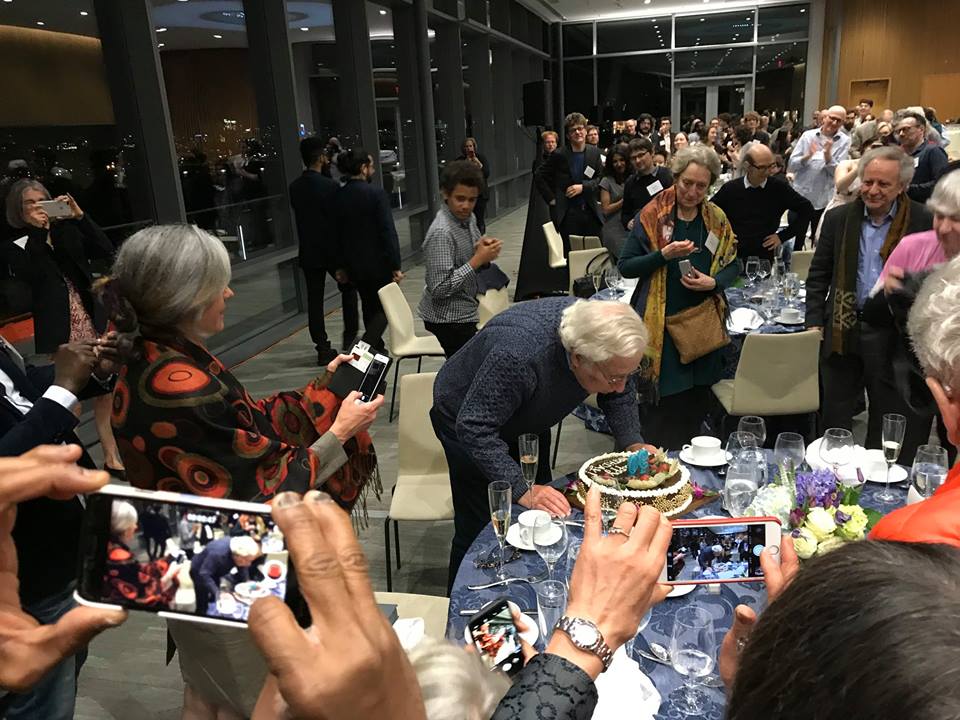Speaker: Qi Hao (Harvard/Peking University)
Title: The Syntax/Semantics of Numeral Classifiers in Mandarin Chinese and Numeral Mapping Parameter
Time: Wednesday, April 17th, 1-2PM
Location: 32-D461
Abstract:
It is a well-known fact that classifiers are needed for grammatical counting in classifier languages such as Mandarin Chinese.
(1) a. yi ge xiaohai
one CLGENERAL child
b. san ben shu
three CLVOLUME book
c. liang ping shui
two CLBOTTLE water
There are three basic and related questions we want to ask about the Num-Cl-N Construction:
A. What is the internal constituency, [Num-Cl]-N or Num-[Cl-N]?
B. What is the function/semantics of classifiers?
C. How to account for the presence/absence of the classifier system among languages?
The mainstream analysis in generative framework is that classifiers are functional morphemes on the extended projection of nominals, functioning as divider heads (Borer 2005), type shifters from kinds to predicates (Chierchia 1998, Jiang 2012) or the syntactic counterpart of COUNT operation (Rothstein 2010, X.P. Li 2013) to make mass/kind-denoting nouns countable with numerals. That is to say, classifiers take nouns as complements and Cl-Ns further combine with numerals, structured as [Num-[Cl-N]]. And the presence of a classifier system is correlated with the absence of plural morphology as well as the absence of articles (see Chierchia 1998). However, analyses within this tradition will face difficulties when it comes to languages like Old Chinese. Old Chinese lacks both plural morphology and articles, but classifiers do not show up, as in (2).
(2) san ren xing, bi you wo shi yan. (The Analects)
three person walk must have my teacher at-there
‘If three people walk together, there must be a teacher of mine among them.’
Furthermore, it would be very hard to explain the fact for the former treatments that numerals can stand alone in predicate and argument positions in English (as in (3)) as well as in Old Chinese (as in (5)), but not in Modern Mandarin (as in (4)).
(3) a. Apples on the table are three.
b. As for apples, I bought three.
(4) a. Zhuozi-shang de pingguo shi *san/san-ge.
Table-LOCTOP MOD apple COP three/three-CLGEN. (same intended meaning as in 3a)
b. Pingguo ma, wo mai-le *san/san-ge
Apple PART, I buy-ASPT three/three-CLGEN. (same intended meaning as in 3b)
(5) a. Shi you bu ke zhi zhe san. (Records of the Grand Historian)
Thing have not can know NOM three
‘Things which cannot be known are three.’
b. Zheng yue, zuo san jun, san fen gongshi er ge you qi yi. (Zuo Zhuan)
First month, form three army, three divide country CONJ each have its one
“In the first month, (Jiwuzi) formed three armies, and divided the country into three parts and then each (of the three people) had one of them.”
Following the spirit of Semantic Parameter in Chierchia (1998), I propose that a parameter for different semantics of numerals is required to account for above facts, which can be called “Numeral Mapping Parameter”. It can be represented as follows:
(6) a. Numerals map to type in non-classifier languages such as English and Old Chinese.
b. Numerals map to type n (numbers/cardinals) in classifier languages such as Chinese.
Precisely, we should say that numerals in all languages start as individual expressions of type n denoting numbers. And the et-type use is derived from the number expression by following processes (Landman 2004, Rothstein 2009):
(7) a. three: 3 (type n)
b. IDENT(three): λn. n = 3 (raised to a predicate by IDENT)
c. function composition: λn. n = 3 °| | (composed with cardinality function)
= λx. |x| = 3
The derivation in (7) is a lexical rule in English, and numerals are type-et as syntactic primitives. However, Mandarin lacks such a rule in the lexicon, and hence numerals are type n when they come into syntax. Such semantic deficiency of numerals is the genuine reason why we see classifiers in Mandarin. Classifiers are of type which turns n-type numerals into et-type numerals. The semantics for classifiers can be represented as follows:
(8) a. [[Cl]] = λP λn λx [PUNIT(x) & |x|P = n] if PUNIT(x) is defined, else
[[Cl]] = λP λn λx [|x|P = n] (the case for kilos, liters)
(P stands for classifier roots)
b. [[san-Cl-ben]] = λx BENUNIT (x) & |x|BEN = 3
(paraphrase: x comes in the naturals units of volumes and the cardinality of x is three measured by the units of volumes)
Then we can say the “classifier” is a built-in semantics of English numerals (with very abstract meaning as ‘object unit’), while such a category must be independently encoded in Mandarin syntax due to Numeral Mapping Parameter. And the internal structure of the Num-Cl-N sequence is [Num-Cl]-N, contrary to most of the former treatments. Further evidence will be given to support this.
We will also make a reply to the structural ambiguity analysis for individuating readings and measuring readings of classifier construction by X.P. Li (2013) and argue that we can get the two different readings from a unified syntax. And we will make a preliminary attempt to answer the question whether the mass-count distinction really exists in classifier languages such as Mandarin.

